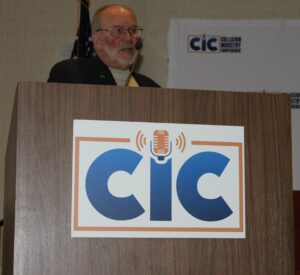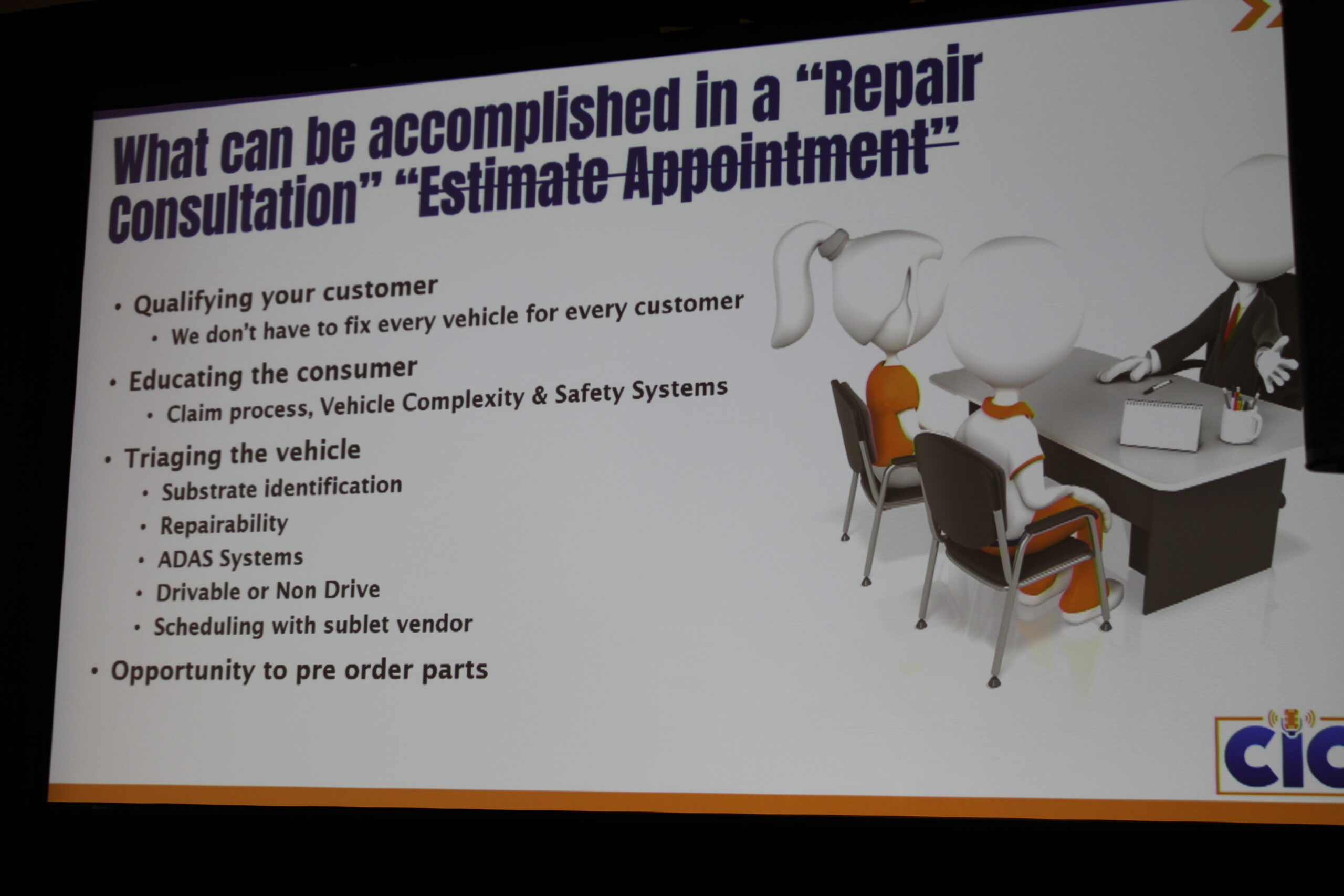
Estimate vs. repair planning: How to keep customers informed
By onCollision Repair
The Collision Industry Conference (CIC)’s Estimating & Repair Planning Committee is researching how shops can be more efficient, including by spending more time initially with customers to explain repair processes.
At CIC’s Jan. 19 meeting in Palm Springs, California, committee member Ron Reichen said the committee has found that knowing when to “fire a customer” and replacing the phrase “estimate” with “repair consultation” can prove beneficial for shops.
“We want to set their expectations and let them understand the uniqueness of the vehicle but yet there’s a lot of commonality with the vehicles,” Reichen said. “We know whether or not they have telematics or how the windshield may have a heads-up display. …I may have two or three days of additional sublet work due to calibrations and readjusting and clearing faults and things of that nature if we’re not doing it internally. ”
He added that while no two collisions are the same, they all have similarities as well as standard repair procedures and processes, including disassembly of this vehicle, pre- and post-scans, pre-alignment, and more. The customer should also be aware that if their insurer is the bill payer, the shop has to get approvals from them before moving forward with repairs, Reichen said.
“Estimates are only a guess. Some consumers just want some sort of price to determine if they want to file a claim or not and that can bite you. …having that conversation right up front and saying, ‘I can do a very cursory preliminary inspection of this vehicle, but we’re gonna have to disassemble, we’re gonna have to pull these procedures, we really have to understand this.'”
When polled about the primary purpose of an initial estimate by insurers, the audience was nearly tied in choosing to establish a price to the initial settlement (32%) and set aside reserves (31%).
Reichen took the audience through two repairs shops have recently done — both of which had estimates from insurance adjusters well below the actual cost of the jobs. The first was a Model S Tesla with damage to the lift gate. The shop let the owner know the best repair would include replacing the lift gate.
This particular repair was a good example of one in that the insurer only wanted to pay slightly above the $1,000 deductible, which was reached through a 14-minute photo-based estimate of $1,000.99 compared to the shop’s initial estimate of $5,400.
To that, Reichen said the committee is considering, “the value of a preliminary estimate and really the amount of time that was spent in it.”
“Was there value to that time or are we just prolonging the inevitable? The repair planner spent a little bit over five hours putting an initial repair plan together based on capturing procedures, looking at parts prices and things that are related to this particular model… [before] any kind of disassembly. …The present process is clearly broken and needs improvement. I think that’s what our committee is here to work on and expose.”
The audience agreed in a poll question that the No. 1 barrier for shops in completing repairs is time constraints.
“The goal of our committee is to expose the time constraints that we’re looking at right now,” Reichen said. “Time is something we can’t get back. Is there really value in the first initial estimate? What does that really produce other than it seems like it produces additional delays?”
The second repair example included an insurer estimate of just over $1,400 compared to the shop’s estimate of $10,000 because of welding work and testing that would need to be completed.
Estimating & Repair Planning Committee Chair Danny Gredinberg shared with Repairer Driven News that regardless of whether an initial estimate is made by a repairer or third-party bill payer, it “can really make things more complicated when it doesn’t actually represent what the vehicle repairs may require.”
“Based on the two examples we shared that are commonly occurring on a daily basis, it did not identify what ‘actual cost’ was necessary to set aside, confused a vehicle owner on what their repair may entail, but also shows how there is a lack of understanding of the actual repair outcome and interpreting it onto a document (estimate),” he said. “Obviously, time constraint was a major influence in how the industry has to deal with the massive workload but we need to realize that working in chaos does not move us forward. We need to take the time upfront with every vehicle and every repair but most importantly every customer to ensure they have a safe and proper outcome.”
Reichen then shared the Society of Collision Repair Specialists (SCRS) first Consumer Tip video, aired in October, with Collision Advice’s Mike Anderson and Database Enhancement Gateway (DEG)’s Danny Gredinberg.
The estimate, Anderson explains, is a visual inspection of the most obvious damage and typically takes 30 to 45 minutes to complete.
The repair plan is written after a damaged vehicle is disassembled, examined and the repair procedures provided by the auto manufacturer, also known as the original equipment manufacturer (OEM), are researched. Repair procedures are basically collision repair instructions for safe and proper repairs, he added.
Images
Featured image: CIC Estimating & Repair Planning Committee member Ron Reichen. (Credit: Lurah Lowery/Repairer Driven News)
Slide from CIC Estimating & Repair Planning Committee Jan. 19, 2023 presentation.

